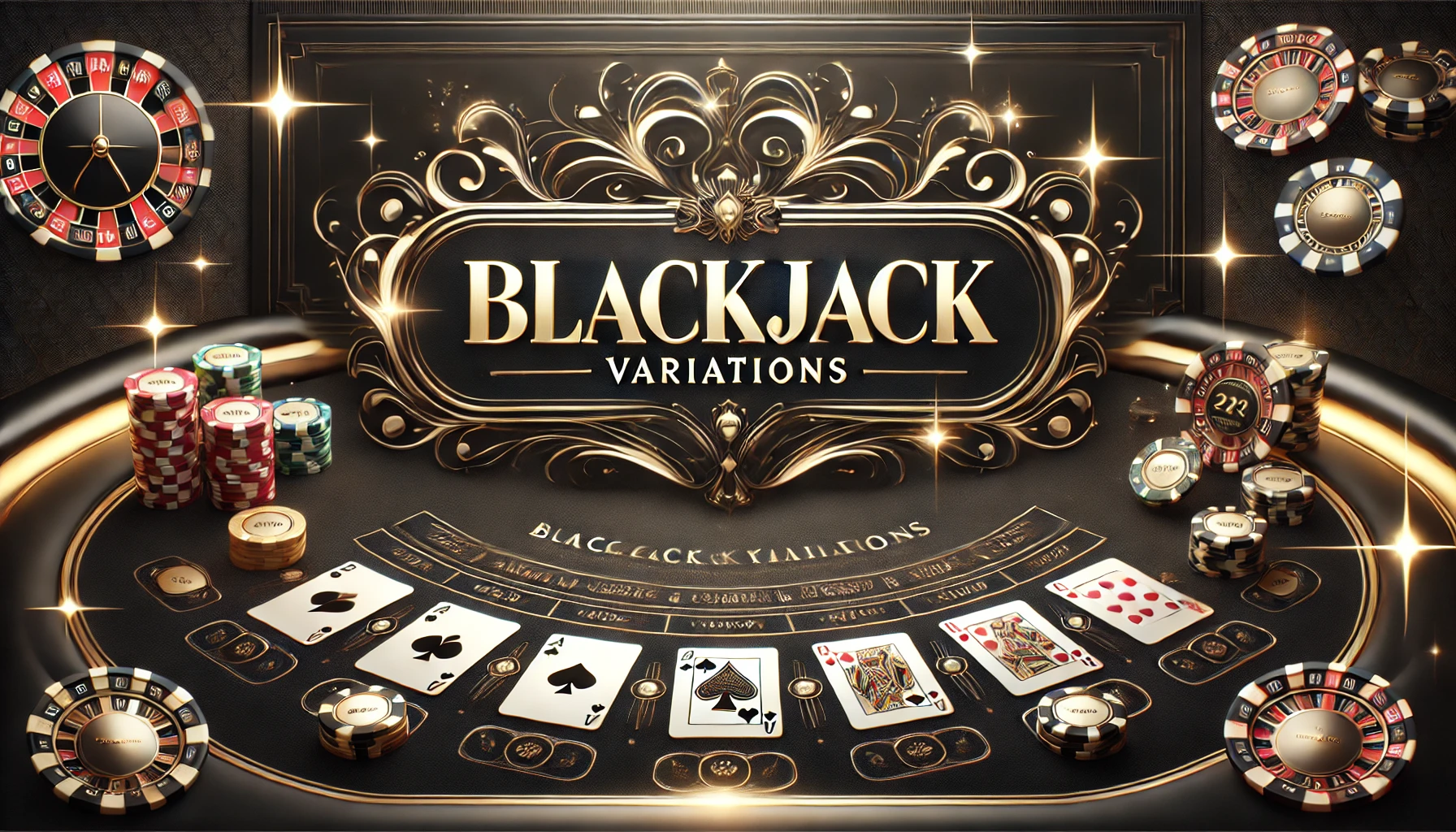Discover Spanish 21 and other exciting blackjack variations. Learn special rules, strategies, and tips to play smart at top licensed Arabic casinos.
If you’ve ever played classic or live blackjack, you know how thrilling it can be to watch the cards come out and try to guess if your next hit will take you over 21. But did you know there are some super-fun twists on this classic game that can make your experience even more exciting? One of the most popular and interesting variations is Spanish 21, but it’s not the only one out there. There are other exotic takes on blackjack too, each offering its own special rules, side bets, and potential payouts.

In this article, we’re going to dive into what makes Spanish 21 stand out from the crowd, along with a few other variations you might stumble upon in the best Arabic casinos listed on our site. By the end, you’ll know how these games differ from regular blackjack, which special rules to keep your eyes on, and how to make the most of new opportunities. We’ll also point out what you need to watch out for, because while these exotic versions can be profitable if you play them right. They can also be tricky if you’re not familiar with the changes to the house edge.
The Basics of Classic Blackjack (A Quick Refresher)
First, let’s take a moment to remember how standard blackjack typically works. You’re aiming to get a total card value of 21, or at least get closer to that number than the dealer without going over. Cards 2 through 10 are worth their face value, face cards (Jack, Queen, King) are worth 10, and Aces can be worth 1 or 11, whichever suits your hand best.
You place your initial bet, receive your two cards, and the dealer gets two as well (though one is usually face-down). You can then hit (take another card), stand (no more cards), or in some cases double down or split if your cards allow. The dealer usually hits until they reach at least 17, and then everyone’s cards are revealed to see who’s closer to 21. If you bust (go over 21), you lose immediately. If the dealer busts, anyone who hasn’t busted wins. That’s the classic flow.
Spanish 21: What Makes It Special
Now let’s dive into Spanish 21, sometimes also called “Spanish Blackjack.” It’s one of the more well-known and widely available exotic blackjack games. The biggest thing you’ll notice right off the bat is that all the 10-spot cards (the actual “10” cards, not face cards) are removed from the deck. Typically, a blackjack deck has 52 cards. But in Spanish 21, each deck has only 48 cards because the four 10s are taken out. The face cards (Jack, Queen, King) remain in the deck, but the actual 10s are gone. That changes the probabilities significantly.
Why Removing 10s Matters
In standard blackjack, there are quite a lot of “tens” in the deck (four per deck, plus the face cards which are also worth 10). Having fewer 10s means you’re less likely to bust when you hit, but it also makes it a bit harder to land those perfect blackjacks and strong hands like 20. This single change can shift the game’s math in important ways. Some people assume that removing tens automatically hurts the player, but Spanish 21 balances that out with a bunch of special rules that can actually be very player-friendly if used correctly.
Special Spanish 21 Rules
- Player’s 21 Always Wins. In classic blackjack, if you and the dealer both get 21, it’s typically a push (tie). In Spanish 21, you win automatically if you reach 21, even if the dealer also hits 21. That’s a pretty big advantage for players.
- Late Surrender Anytime. You can usually surrender even after doubling down in many versions of Spanish 21. This is not something you can do in standard blackjack. It means if you see your cards are heading south, you can surrender and save part of your bet.
- Double Down on Any Number of Cards. Some Spanish 21 rules let you double down after you’ve taken multiple hits, which can be huge if you’re building a strong hand.
- Bonus Payouts for Certain Hands. A five-card 21, six-card 21, or a 7-7-7 combination can come with bonus payouts that don’t exist in standard blackjack.
All these extra benefits help offset the fact that 10s are missing. In many cases, Spanish 21 can have a house edge similar to or even better than regular blackjack, provided you know the optimal strategy. That’s one reason it’s a favorite among seasoned players in brick-and-mortar venues and online casinos alike.
Other Exotic Blackjack Variations
Spanish 21 might be the headliner when it comes to exotic blackjack, but it’s certainly not alone. Here are a few others you might see in the best Arabic casinos featured on our site.
- Pontoon. Pontoon is sort of like a British cousin to blackjack. You don’t see the dealer’s cards at all at first, and the terminology is different (“twist” instead of “hit,” “stick” instead of “stand,” etc.). The big twist is that you need at least 15 to “stick,” and a five-card hand automatically wins unless the dealer has a pontoon (21 with two cards). It can be a lot of fun once you get used to the new terms.
- Double Exposure Blackjack. In Double Exposure, the dealer’s cards are both face-up from the start. It’s a surreal feeling seeing exactly what the dealer has right away. Naturally, to balance this massive advantage for players, the rules change in other ways. Blackjacks often pay even money (instead of the usual 3:2), and if there’s a tie, the dealer wins in most cases (except for a natural 21). It’s a totally different vibe, but it can be exciting because you get more control over your decisions.
- Blackjack Switch. Blackjack Switch lets you play two hands at once and switch the top cards between them. If you’ve got, say, a 5-10 in one hand and a 10-6 in the other, you could swap the top cards to make 10-10 (20) and 5-6 (11) if you want. It’s a neat concept that can give you a serious edge. But again, the game adjusts the payouts, usually paying out even money on blackjack and giving the dealer a push on 22. This means if the dealer busts with 22, it’s not a bust—everyone just ties. This variation can be found in many online casinos, including some of the top Arabic platforms we recommend.
- Super Fun 21. The name might sound a bit silly, but Super Fun 21 can be quite entertaining. It’s typically played with a single deck, which is already a plus for players who love to count cards. It allows you to double down at almost any time, and you can even surrender halfway through. A player blackjack always wins, and some versions let you split up to four times. However, blackjacks usually pay even money, and the house often has some rules to keep the edge in check, like requiring the dealer to hit on a soft 17. It’s worth a try if you’re looking for something new and fast-paced.
What to Watch Out For
While these exotic variations can add a ton of fun and excitement, they’re not always automatically better for you than standard blackjack. In many cases, the casino balances out your increased advantages (like special bonuses and easy surrender rules) by introducing other changes (like removing 10s or paying less for blackjacks). The house edge can be very different from one variation to another.
It’s always smart to:
- Read the Specific Rules. Online casinos often post the rules clearly. Take a few minutes to see if blackjacks pay 3:2 or 6:5, whether the dealer hits on soft 17, if there’s a late surrender option, etc.
- Practice for Free if You Can. Many of the top-rated Arabic casinos have demo modes where you can try out the games without risking real money. It’s a great way to see if you like the twist before you commit.
- Check Payout Charts. Some variations offer side bets that can have big payouts, but they often come with a hefty house edge. If you love side bets for the entertainment, go for it, but be aware they’re generally not the best way to grow your bankroll.
Real Stats and Facts
- Spanish 21 House Edge. With perfect play, Spanish 21 can have a house edge as low as around 0.4% to 0.8%, depending on the specific rule set. That can be competitive with many regular blackjack games, which can hover around 0.5% with perfect play under standard Vegas rules.
- Double Exposure House Edge. This can vary a lot. Some versions push the house edge over 1.0% because of those tricky tie rules and even-money payouts. Always check the fine print.
- Pontoon Advantages. Because you can win automatically with a five-card hand, there’s a lot of potential for creativity. But the hidden dealer cards mean it can be easy to misjudge a situation if you’re new.
- Side Bets. Side bets like “Match the Dealer” or “21+3” might pay off big occasionally, but the house edge is often 3-4% or more. Play them for fun, not as a core strategy.
Final Thoughts: Embrace the Variety
If you love blackjack but want a new thrill, it’s definitely worth giving Spanish 21 or another exotic variation a shot. There’s something incredibly fun about flipping the usual rules around, seeing that extra twist, and discovering new strategies that just don’t apply to the classic game. Who knows, you might find a new favorite that you’ll keep coming back to. Just remember to do a little homework first. Make sure you understand how the special rules affect the game, and always check out the details of each casino’s license and payouts.




